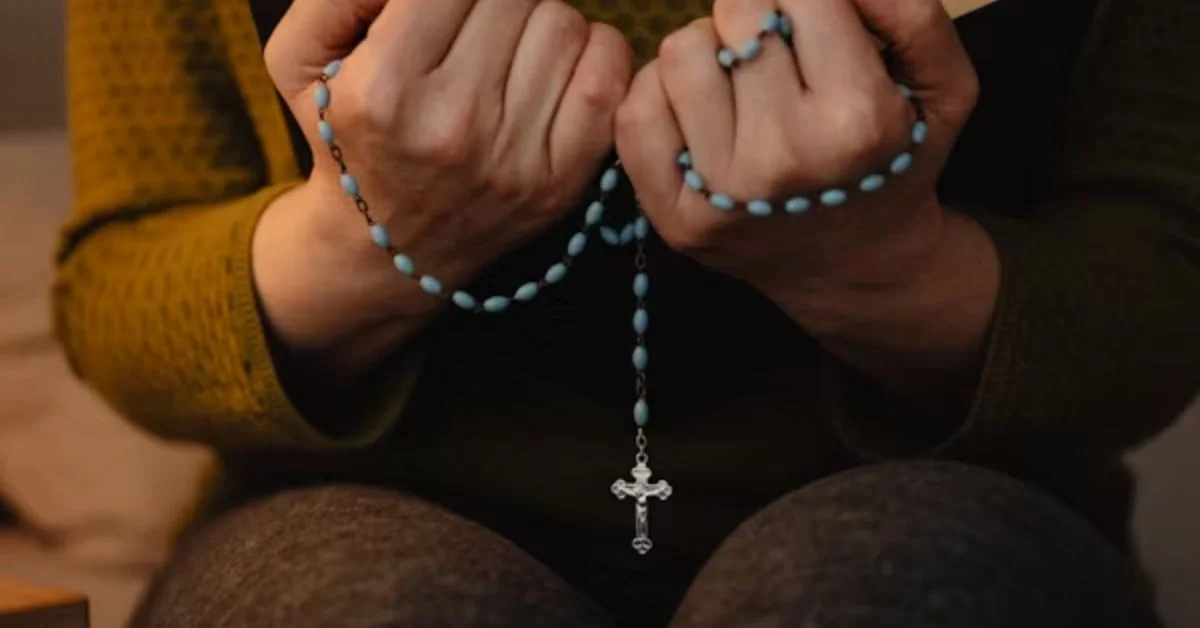Prayer has always been a central part of human spirituality. Across traditions, people have sought connection with something greater than themselves through words, silence, rituals, or meditation. One of the most unique and transformative prayers practiced in spiritual and recovery communities is the Set Aside Prayer. Unlike prayers that ask for blessings, healing, or success, the Set Aside Prayer is not about asking for something external. Instead, it focuses inward, encouraging a person to let go of assumptions, biases, and the weight of past experiences so that they may approach life, spirituality, and growth with openness and humility.
The Set Aside Prayer is particularly known in recovery circles, especially within groups inspired by the 12-Step framework. It is designed to help individuals release preconceived notions about themselves, others, spirituality, and even God, so that they can receive new understanding and deeper awareness. Yet, its use extends far beyond recovery programs; it resonates with anyone seeking clarity, humility, and transformation.
In this article, we will explore the Set Aside Prayer in detail—its origins, meaning, application, spiritual significance, psychological benefits, and relevance in daily life. We will also discuss how to practice it, ways it differs from other prayers, and how it can bring about profound change.
What is the Set Aside Prayer?
The Set Aside Prayer is a simple but powerful prayer in which a person asks for the ability to set aside what they think they know, believe, or understand, so they may gain a new perspective. At its heart, it is about creating openness. Humans often cling tightly to beliefs, routines, and judgments, but growth requires humility and willingness to learn.
The wording of the prayer may vary, but its core sentiment remains:
- To set aside everything one thinks they know about themselves.
- To set aside everything one thinks they know about others.
- To set aside everything one thinks they know about God, spirituality, or life.
- To ask for fresh understanding, new experience, and greater awareness.
This shift from certainty to openness allows for transformation. It is less about control and more about surrender.
The Origins of the Set Aside Prayer
While prayer has existed since ancient times, the Set Aside Prayer has a more modern context. It emerged from spiritual recovery communities, especially Alcoholics Anonymous and related 12-Step fellowships. Within these groups, members recognized that preconceived notions often blocked growth. People would come into recovery with fixed ideas about how life works, who God is, or what others think. These beliefs sometimes hindered their ability to heal.
The Set Aside Prayer became a tool to break through those mental and spiritual barriers. By inviting participants to lay aside prior assumptions, the prayer cultivated humility, curiosity, and openness to new ways of living. Over time, it spread beyond recovery circles, inspiring people from all walks of life to practice it as part of their spiritual and personal development.
The Meaning Behind “Set Aside”
The phrase “set aside” does not mean rejecting or discarding beliefs forever. Instead, it suggests temporarily laying them down, much like putting down a heavy bag to walk unburdened for a while. When people set aside what they think they know, they allow themselves to:
- Listen without prejudice.
- Experience life freshly, without filters of past pain or rigid beliefs.
- Encounter spirituality without assumptions.
- Discover new truths about themselves and others.
This act of setting aside is a gesture of humility. It acknowledges that no matter how much we think we understand, there is always more to learn.
Spiritual Purpose of the Set Aside Prayer
Spiritually, the Set Aside Prayer serves multiple purposes:
- Cultivating Humility
Spiritual traditions emphasize humility as the foundation of growth. The Set Aside Prayer creates space for humility by admitting that personal knowledge is limited. - Deepening Connection with the Divine
By setting aside preconceived notions about God or spirituality, individuals become more receptive to authentic encounters with the divine. - Releasing Ego and Control
Much of human suffering stems from the desire to control. The prayer shifts focus from control to surrender, which is spiritually liberating. - Renewing Awareness
Spiritually, the prayer renews one’s perspective, enabling individuals to see beauty, wisdom, and meaning where they might have overlooked it before.
Psychological and Emotional Benefits
Beyond spirituality, the Set Aside Prayer has strong psychological benefits. It resonates with principles in mindfulness, cognitive therapy, and emotional healing.
- Breaking Mental Patterns: Setting aside old beliefs disrupts unhelpful thought loops.
- Encouraging Openness: It fosters curiosity, reducing rigid thinking and judgment.
- Reducing Anxiety: Surrendering control lessens stress about “having all the answers.”
- Strengthening Relationships: Approaching others without assumptions allows for deeper connection and empathy.
- Promoting Growth: It creates mental flexibility, a key trait in emotional and personal development.
How to Practice the Set Aside Prayer
Practicing this prayer does not require elaborate rituals. It can be spoken quietly, repeated daily, or adapted to one’s personal faith tradition.
Step-by-Step Guide
- Find Quiet Space
Begin in a quiet environment, free from distractions. - Take a Few Breaths
Center yourself with deep breathing to calm the mind. - Speak the Prayer
Say the prayer aloud or silently. Example:
“God, please help me to set aside everything I think I know about myself, others, my spiritual path, and You, so that I may have an open mind and a new experience.” - Pause in Silence
After saying the prayer, remain silent for a moment, allowing openness to settle within. - Repeat Regularly
Consistent practice deepens its effect over time.
Table: Comparison Between Set Aside Prayer and Traditional Prayers
| Aspect | Traditional Prayers | Set Aside Prayer |
|---|---|---|
| Focus | Asking for blessings, help, or intervention. | Asking for openness, humility, and new vision. |
| Tone | Petitionary or thankful. | Surrendering and receptive. |
| Duration | Often long with structured wording. | Short, simple, direct. |
| Outcome | External blessings, guidance, or strength. | Internal clarity, openness, spiritual renewal. |
| Spiritual Attitude | Often centers on tradition or belief. | Centers on letting go of belief temporarily. |
Applications in Recovery
In recovery programs, the Set Aside Prayer is especially powerful. People often arrive with shame, guilt, fear, and resistance. They may believe they know what recovery should look like, or that it will not work for them. This mindset can block transformation.
By praying to set aside preconceived ideas, members approach meetings, sponsors, and steps with fresh eyes. They become willing to hear suggestions, try new actions, and consider new understandings of God or spirituality. This openness is often a turning point, enabling recovery to take root.
Applications in Daily Life
The Set Aside Prayer is not limited to recovery. It can transform everyday life when practiced consistently.
- Relationships
Helps remove assumptions about what others think, fostering genuine dialogue and compassion. - Work and Creativity
Encourages innovation by releasing rigid approaches and allowing new ideas. - Parenting
Helps parents see children as evolving individuals, not fixed labels. - Personal Growth
Builds self-awareness by challenging self-definitions that no longer serve.
Table: Examples of Everyday Use
| Situation | How the Set Aside Prayer Helps |
|---|---|
| Facing a conflict at work | Sets aside assumptions about colleagues, opens room for resolution. |
| Parenting a teenager | Helps parents see beyond stereotypes, leading to understanding. |
| Struggling with spirituality | Releases rigid beliefs, allows new spiritual experiences. |
| Stuck in personal growth | Clears mental blocks, invites fresh insights. |
| Beginning new relationships | Removes preconceived expectations, creating genuine connection. |
Challenges in Practicing the Prayer
Like any spiritual discipline, the Set Aside Prayer comes with challenges:
- Resistance from Ego: The ego dislikes surrender and prefers certainty.
- Fear of Change: Letting go of beliefs can feel unsettling.
- Impatience: People may expect instant results rather than gradual transformation.
Overcoming these challenges requires consistency, humility, and trust in the process.
The Transformative Power of Openness
The Set Aside Prayer reminds us that knowledge, while valuable, can sometimes blind us to new experiences. By choosing humility and openness, we allow transformation to unfold. Many practitioners report renewed joy, deeper spiritual connection, improved relationships, and profound peace.
Future Relevance of the Set Aside Prayer
As the modern world grows more polarized—politically, socially, spiritually—the Set Aside Prayer offers an antidote. Its practice of humility and openness is urgently needed in dialogues between cultures, communities, and individuals. By teaching us to pause, set aside certainty, and listen, it may help heal divides and nurture understanding in an age of fragmentation.
Conclusion
The Set Aside Prayer is more than words—it is a way of life. By asking for the humility to let go of what we think we know, we make space for fresh understanding, new experiences, and deeper connection with ourselves, others, and the divine. Whether practiced in recovery, daily spirituality, or personal relationships, this prayer offers a path to clarity, openness, and transformation.
Its beauty lies in its simplicity, and its power lies in its depth. In a world that prizes certainty, the Set Aside Prayer invites us to embrace not-knowing, and in doing so, discover wisdom beyond what we imagined.
FAQs
1. What is the purpose of the Set Aside Prayer?
Its purpose is to help individuals let go of preconceived notions and open themselves to new understanding and growth.
2. Where did the Set Aside Prayer originate?
It originated within recovery communities like Alcoholics Anonymous, but it has spread into broader spiritual and personal use.
3. How often should I practice the Set Aside Prayer?
It can be practiced daily, before meetings, during meditation, or anytime you need clarity and openness.
4. Does the Set Aside Prayer belong to a specific religion?
No, it is non-denominational and can be adapted by people of any faith or even secular practitioners.
5. What are the benefits of practicing the Set Aside Prayer?
It fosters humility, reduces judgment, deepens relationships, promotes openness to new ideas, and strengthens spiritual awareness.
For more information, click here.









